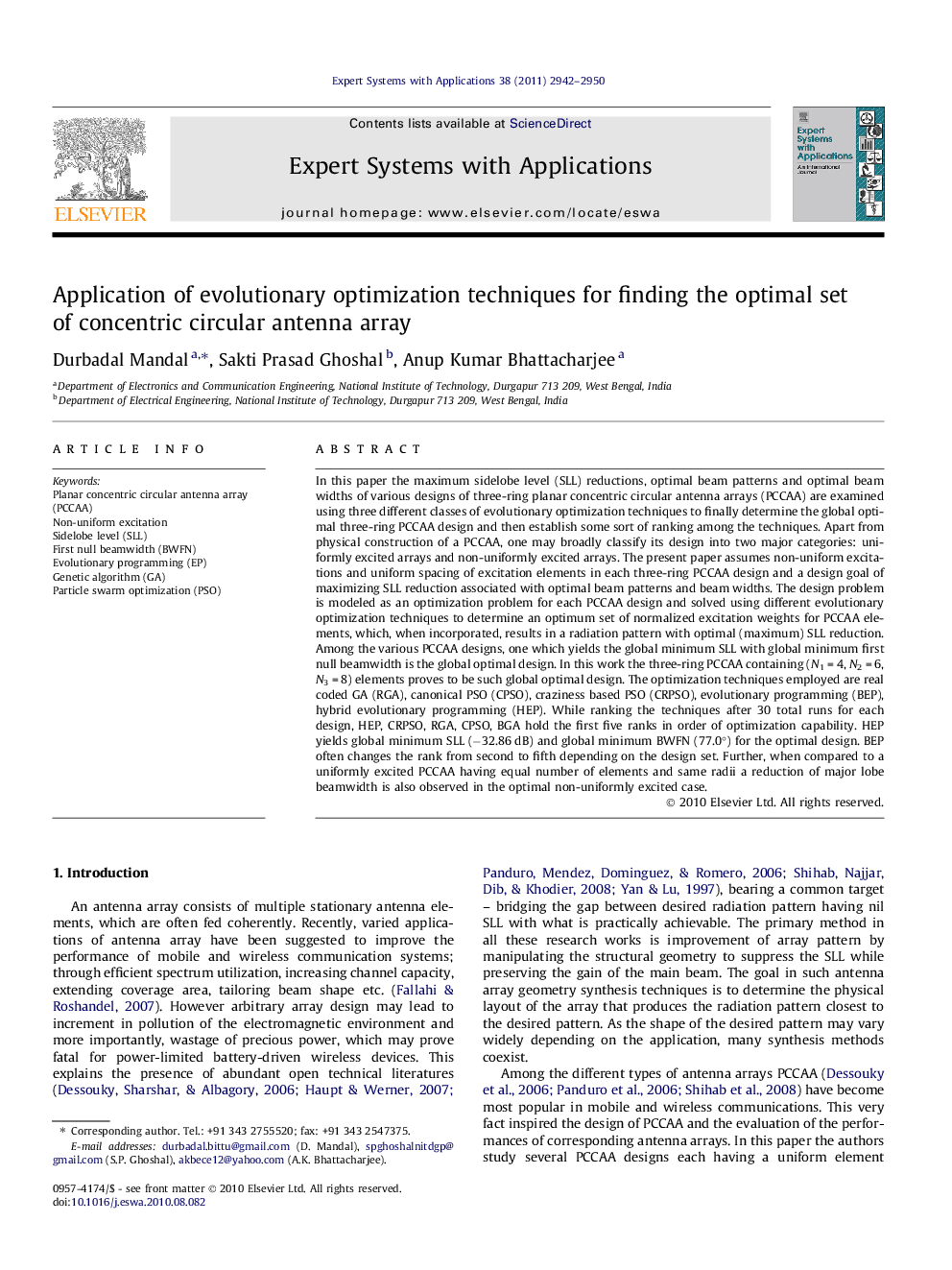| Article ID | Journal | Published Year | Pages | File Type |
|---|---|---|---|---|
| 385946 | Expert Systems with Applications | 2011 | 9 Pages |
In this paper the maximum sidelobe level (SLL) reductions, optimal beam patterns and optimal beam widths of various designs of three-ring planar concentric circular antenna arrays (PCCAA) are examined using three different classes of evolutionary optimization techniques to finally determine the global optimal three-ring PCCAA design and then establish some sort of ranking among the techniques. Apart from physical construction of a PCCAA, one may broadly classify its design into two major categories: uniformly excited arrays and non-uniformly excited arrays. The present paper assumes non-uniform excitations and uniform spacing of excitation elements in each three-ring PCCAA design and a design goal of maximizing SLL reduction associated with optimal beam patterns and beam widths. The design problem is modeled as an optimization problem for each PCCAA design and solved using different evolutionary optimization techniques to determine an optimum set of normalized excitation weights for PCCAA elements, which, when incorporated, results in a radiation pattern with optimal (maximum) SLL reduction. Among the various PCCAA designs, one which yields the global minimum SLL with global minimum first null beamwidth is the global optimal design. In this work the three-ring PCCAA containing (N1 = 4, N2 = 6, N3 = 8) elements proves to be such global optimal design. The optimization techniques employed are real coded GA (RGA), canonical PSO (CPSO), craziness based PSO (CRPSO), evolutionary programming (BEP), hybrid evolutionary programming (HEP). While ranking the techniques after 30 total runs for each design, HEP, CRPSO, RGA, CPSO, BGA hold the first five ranks in order of optimization capability. HEP yields global minimum SLL (−32.86 dB) and global minimum BWFN (77.0°) for the optimal design. BEP often changes the rank from second to fifth depending on the design set. Further, when compared to a uniformly excited PCCAA having equal number of elements and same radii a reduction of major lobe beamwidth is also observed in the optimal non-uniformly excited case.
Research highlights► All optimization techniques yield better radiation patterns for optimally excited PCCAA with optimal radii than those obtained for uniformly excited CCAA with d = λ/2 inter-element spacing in each ring. ► The PCCAA having N1 = 4, N2 = 6, N3 = 8 elements in three successive rings reduces the sidelobe level to the grand lowest and thus found to be the global optimal design among other designs, as obtained by all Evolutionary Optimization Techniques. ► A reduction of major lobe beamwidth is observed in the optimal non-uniformly excited PCCAA, as compared to a uniformly excited PCCAA having equal number of elements and same radii. ► The optimal PCCAA design yields the grand lowest sidelobe level of −32.86 dB as determined by the Hybrid evolutionary programming technique. ► The Hybrid evolutionary programming technique outperforms significantly the other counterparts of Evolutionary Optimization Techniques for the near-global optimization of the PCCAA problem.
